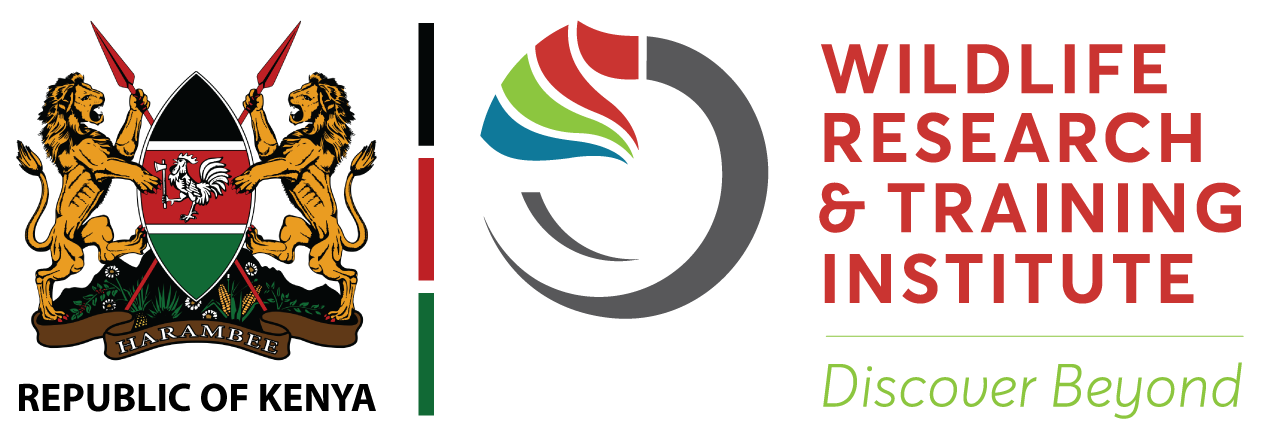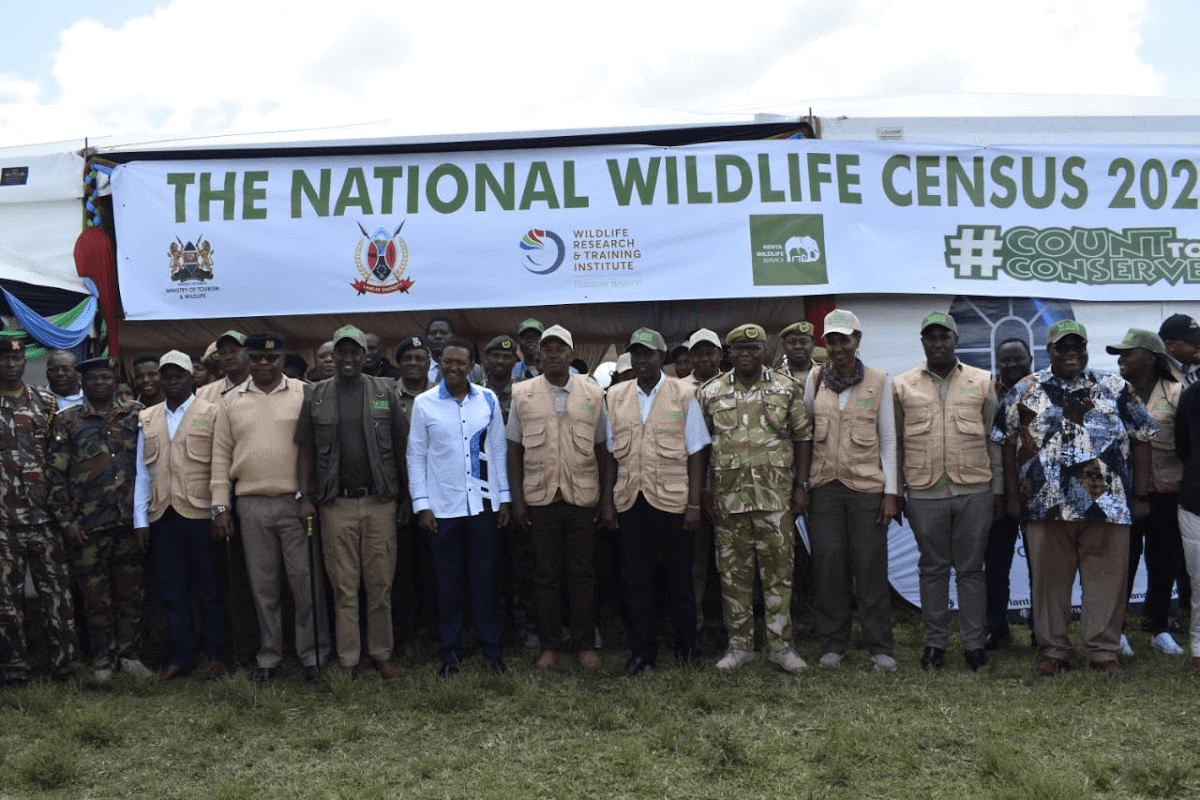The government has begun the wildlife census that seeks accurate data for the population of all aquatic and land-based wildlife species across the country.
The exercise is aimed at establishing the current status of wildlife populations, trends and their distribution across Kenya.
Tourism Cabinet Secretary Alfred Mutua said that the census will provide invaluable data that will inform evidence-based decision-making, conservation strategies, and policy-making, and hereby contribute to ultimate sustainable management practices to protect the nation’s rich biodiversity.
Mutua said the exercise is undertaken every three years in line with ecological cycles of fecundity and mortality.
He said accurate data on wildlife will guide the allocation of resources, ensuring that critical areas receive the attention and funding they require.
“The results of the census will inform communities on the best conservation efforts promoting the Bottom-Up Economic Transformation Agenda (BETA). This transparency and inclusion will reinforce the role of communities as stewards of our wildlife heritage,” Mutua said.
He made the remarks during the launch of the National Wildlife Census 2024 in Narok Airstrip, Narok county on Wednesday.
In attendance were Narok Governor Patrick Ole Ntutu, Tourism PS John Ololtuaa, KWS Director General Dr Erustus Kanga, and Patrick Omondi, a director and CEO at the Wildlife Research and Training Institute.
This year’s census will be undertaken in a phased approach starting from mid-June 2024 to June 2025.
The first phase has prioritised the Maasai Mara that will commence from June 17- 22,2024.
Other ecosystems in the pipeline include Amboseli-Magadi, Coastal marine mega-fauna, and Athi-Kapiti ecosystems, as well as the closed wildlife areas of Ruma and Lake Nakuru National Parks, Mwea National Reserve, and Solio Conservancy.
The second phase will count the rest of the country.
The CS added that the numbers from the tally have been used to inform formulation and update National species recovery and action plans in conservation areas.
“The data has been used to identify important wildlife areas and therefore establish community conservancies, for example, in Narok, Garissa and other Northern counties,” he said.
Despite the census being used to inform the protected area and ecosystem-wide management plans, Mutua said the data will be used to inform tourist promotion by identifying destinations based on biodiversity hotspots and data will also inform wildlife scientific research in the country.
“This comprehensive wildlife data obtained from wildlife censuses will provide current data and information to support the development of Counties spatial plans as well as protected areas and ecosystems management plans,” he said.
Mutua said that effective management requires knowledge of current status of wildlife as envisioned in Pillar 3 of the National Wildlife Strategy 2030 on ‘Evidence based decision making.
“The National Wildlife Strategy 2030 outlines a vision for wildlife conservation as part of a strong environmental foundation for achieving Kenya’s sustainable development agenda,” he said.
The Wildlife Act 2013 provides a framework to develop regulations for access and sharing of wildlife data and information in the wildlife sector to inform the Country’s wildlife conservation and management goals.
Mutua said that Kenya is signatory to a number of Multi-lateral Environmental agreements (MEAs) such as the Convention on Biological Diversity (CBD), Convention on International Trade in Endangered Species of Wild Flora and Fauna (CITES) and the Convention on Migratory Species of Wild Flora and Fauna (CMS).
“Kenya is endowed with a wide diversity of ecosystems including forests, savannas, fresh water and marine; and more than 35,000 wild species of fauna and flora that constitute our biodiversity,” he said.
He also noted that regardless of the good national and international policies, the country’s wildlife populations continue to decline.
Mutua expressed the state’s commitment to the conservation and sustainable management of our precious wildlife heritage.
Ntutu said that the wildlife censuses will provide vital data on the status of wildlife populations, which is essential for evidence-based decision-making, a key pillar of the National Wildlife Strategy 2030.
“This data helps improve tourism products by understanding wildlife distribution and abundance over time,” Ntutu said.
He said Kenya’s wildlife faces multiple challenges, including increasing human and livestock populations, climate change impacts, invasive species, and zoonotic diseases.
“The census will assess the impact of these challenges, especially the severe drought of 2022 and recent flooding, on wildlife populations and habitats,” the governor said.
The county boss also noted that the comprehensive wildlife data will aid in developing county spatial plans and management plans for protected areas and ecosystems.
On his part, Omondi said that the Institute is mandated to conduct comprehensive wildlife censuses, and the commitment to this mandate is unwavering.
“The census we are launching today is the culmination of meticulous planning, extensive research, and collaboration with various stakeholders,” he said.
He said that they have developed rigorous scientific methodologies to conduct the wildlife census which will ensure that they gather reliable data on wildlife populations, their distribution, and their habitats.
“By employing advanced technologies such as satellite imagery, GPS tracking, and drone surveys, we aim to achieve a level of precision and detail that is unprecedented,” Omondi said.
The director added that the data collected from this census will form the foundation for future conservation efforts and will also guide policy formulation, resource allocation, and the implementation of targeted conservation programs.
Kenya’s key wildlife landscapes are currently facing multiple challenges, including increasing human and livestock populations, impacts of global climate change (droughts – 2022 and floods – 2023), the spread of invasive and alien species, and the dangers of infectious zoonotic diseases that require frequent monitoring.
During the 2021 census, 343,380km2 (~ 59%) of Kenya’s land mass – 580,367 km2 was covered.
Over 30 species of mammals, birds and marine species were counted in various ecosystems during the census. Some of the iconic species counted were elephants (n=36,280), black rhinos (n=897), white rhinos (n=842), lions (n=2,589), hyenas (n=5,189), Cheetahs (n=1,160), wild dogs (n=865) amongst others.
By Kiplangat Kirui
Credit THE STAR
https://www.the-star.co.ke/news/realtime/2024-06-19-state-begins-census-amid-drop-in-number-of-wildlife/

